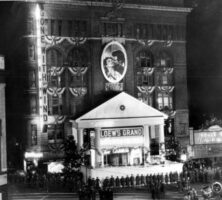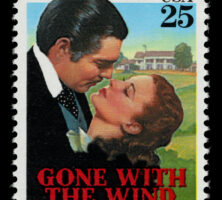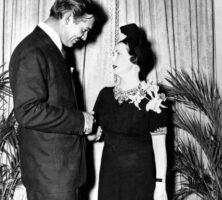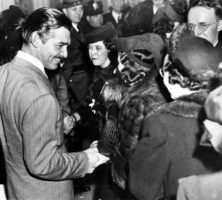Few films are so closely identified with a geographical region as Gone With the Wind is identified with Georgia and the Old South. The 1939 adaptation of Margaret Mitchell’s 1936 novel, produced by David O. Selznick, featured such well-known actors as Clark Gable (Rhett Butler), Olivia de Havilland (Melanie Wilkes), and Leslie Howard (Ashley Wilkes), and made a star of actress Vivien Leigh (Scarlett O’Hara). It remains one of the most popular and commercially successful films ever made. Its main theme, from the Max Steiner score, is recognized throughout the world. In its use of color, scene design, and cinematography, it set new standards. The film won eight Academy Awards, more than any film up to that time.
Adapting the Novel
The film is a relatively faithful adaptation of the novel, despite a handful of significant changes. The novel offers detailed information about the early lives of Gerald and Ellen O’Hara that is largely missing from the film. The film significantly simplifies Scarlett’s life (removing, for example, two of her children) and discards much of the novel’s social context. The novel’s racial attitudes were softened—offensive language and references to the Ku Klux Klan were removed, and the sexual overtones of the attack on Scarlett in the freedmen’s settlement were deleted. The novel was sexually explicit for its day, but this too was toned down, in accord with the Hays Code; Rhett Butler’s rape of Scarlett and Melanie’s childbirth were treated in indirect or euphemistic terms.
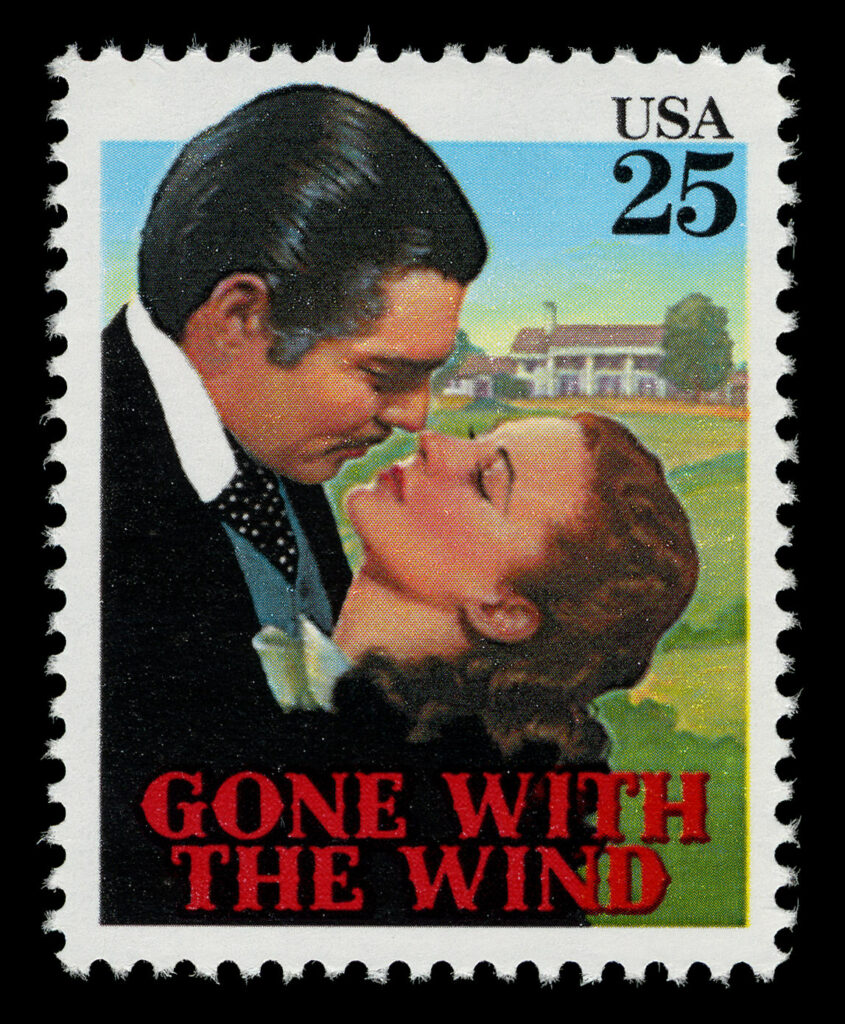
Smithsonian National Postal Museum
Seldom has a successful film been the product of such chaos and disorganization. The time between Selznick’s purchase of the rights to the novel and the actual premiere was three and a half years; in the 1930s most movies were produced and premiered within a matter of months. The search for actors to play the leading characters became the stuff of American legend: 1,400 interviews and ninety screen tests were necessary before Selznick cast Vivien Leigh, a twenty-six-year-old British actress, as Scarlett. Clark Gable was a popular choice as Rhett Butler, though Selznick had to sell MGM an interest in the film to gain permission to use him. Gable did not want to play the part. Leslie Howard was embarrassed by the Ashley Wilkes role. Olivia de Havilland, on the other hand, actively sought to play the part of Melanie Wilkes.
Perhaps as a way of generating publicity, and to create the proper atmosphere, Selznick did look for southern actors. A casting call in Atlanta, held at the Biltmore Hotel, brought a mob of hundreds of young women hoping to play Scarlett. In the end, only a few minor roles went to southerners. Gable was from Ohio and refused to use a southern accent; Leigh and Howard were from England.
Two Georgians, Susan Myrick and Wilbur Kurtz, served as advisors to Selznick on matters of cultural and historical accuracy. Selznick wanted to produce an epic drama that was historically accurate. The film was largely shot in California, with artists, painters, scene designers, and architects working together to create a convincing simulation of the southern landscape. The work of production designer William Cameron Menzies and costume designer Walter Plunkett, and the attention to detail in costumes, buildings, and set design, are major reasons for the film’s success.
George Cukor was Selznick’s original choice as director. Cukor spent two years on the project and was actively involved in casting the film and developing major characters. Nineteen days after shooting began, however, Selznick fired Cukor, because they disagreed on how filming should proceed. Selznick then turned to Victor Fleming, who was just completing work on The Wizard of Oz (1939). Fleming reshot many scenes already filmed by Cukor and demanded that filming proceed in a more conventional fashion. Although Fleming was credited as director, a number of others also had a role in directing, especially Cukor, who had a lasting influence on the film.
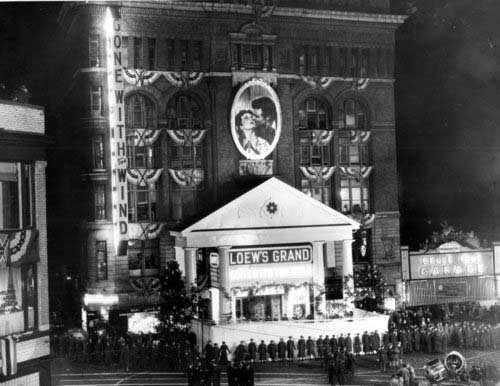
Courtesy of Atlanta Journal-Constitution.
Fitting the events of this 1,000-plus-page novel into a film that could be viewed in one sitting would have been a formidable task for any screenwriter. (At just under four hours, it was one of the longest Hollywood films ever made.) Any screenwriter would have found it a challenge to satisfy Selznick. Pulitzer Prize–winning dramatist Sidney Howard wrote several drafts of the screenplay before withdrawing from the project, frustrated by Selznick’s interference. Selznick attempted to write and rewrite sections of the screenplay himself, often composing scenes the night before they were shot. Others worked on the script as well. The playwright Ben Hecht was hired to work on the script, and finally Howard was brought back to get it in shape, even as filming was under way.
The Film
Often touted as the epic story of the Old South, Gone With the Wind focuses almost entirely on the Civil War (1861-65) and the years immediately following, ending around 1872. Such events as the start of the war, Gettysburg, the siege of Atlanta, Sherman’s march through Georgia, and Reconstruction provide a historical background for the main focus—Scarlett O’Hara, her unrequited love for Ashley Wilkes, and her marriages, especially her turbulent relationship with her third husband, Rhett Butler.
Geographically, the film moves between the O’Hara plantation, Tara, which Scarlett struggles to save, and Atlanta, which both film and novel treat as a symbol of hope and promise for Georgia’s future. Scarlett is identified with Tara, but more strongly with Atlanta, especially because of her fierce independence, her disdain for convention, and her growing concern with money (a concern more evident in the novel than the film). Ultimately, both Scarlett and Atlanta symbolize the post–Civil War South, struggling to survive and rebuild.
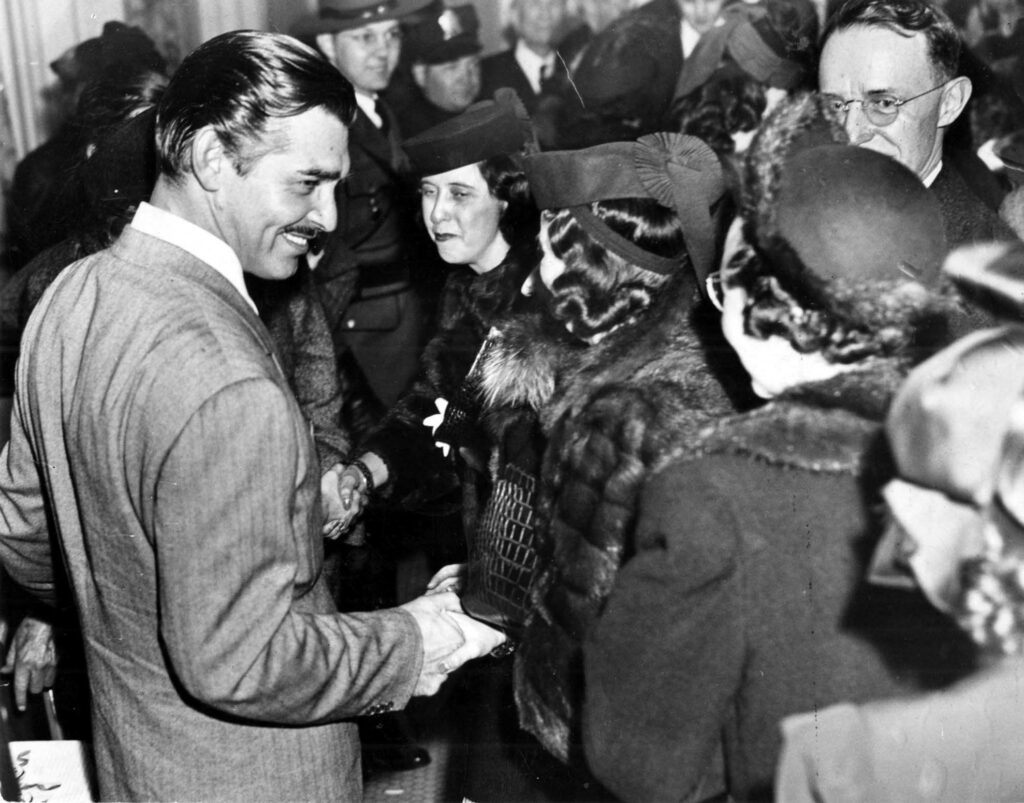
Courtesy of Atlanta Journal-Constitution.
Politically, the film offers a conservative view of Georgia and the South. In her novel, despite her southern prejudices, Mitchell showed clear awareness of the shortcomings of her characters and their region. The film is less analytical. It portrays the story from a clearly Old South point of view: the South is presented as a great civilization, the practice of slavery is never questioned, and the plight of the freedmen after the Civil War is implicitly blamed on their emancipation. A series of scenes whose racism rivals that of D. W. Griffith’s film The Birth of a Nation (1915) show Reconstruction mainly as a time when southern whites were victimized by freedpeople, who themselves were exploited by northern carpetbaggers.
Although the film provides a compelling if romanticized portrait of the southern planter class, it vilifies the white lower class (mainly represented by the overseer Jonas Wilkerson), and enslaved and formerly enslaved people are viewed both as clowns and as faithful servants. Gone With the Wind was hardly alone in the 1930s in its caricature of African American characters, and it did offer previously unavailable opportunities to such Black actors as Hattie McDaniel (Mammy), Butterfly McQueen (Prissy), and Eddie Anderson (Uncle Peter).
A major theme in the film is the contrast between the land, which the O’Haras value, and the commercial environment of the city. Some of the most compelling scenes center on the land: Gerald O’Hara’s insistence to his daughter Scarlett that “land’s the only thing in the world worth working for. Worth fighting for, worth dying for. Because it’s the only thing that lasts”; Scarlett’s discovery after her retreat from Atlanta that Tara still stands, unburned by the Union army; and the scene in which she raises her fist to the sky and vows, “As God is my witness, I’ll never be hungry again.” Other notable scenes focus on the Battle of Atlanta, wounded soldiers laid in the city’s immense railyard, and a gruesome battlefield traversed by Scarlett during her retreat.
Premiere and Posterity
Gone With the Wind premiered at the Loew’s Grand Theater in Atlanta on December 15, 1939. The theater’s façade had been renovated to resemble a southern mansion. A three-day celebration preceded the premiere. Mayor William B. Hartsfield declared a holiday and gave the city’s workers a half day off. A crowd of 18,000 gathered in front of the theater on opening night, eager for a glimpse of the stars. Most of the major actors in the film attended the premiere, with the exception of Howard and McDaniel (the Black actors were not invited). Margaret Mitchell attended as well, and after being escorted to the stage by Gable and Leigh, she gave the film and Selznick her blessing.
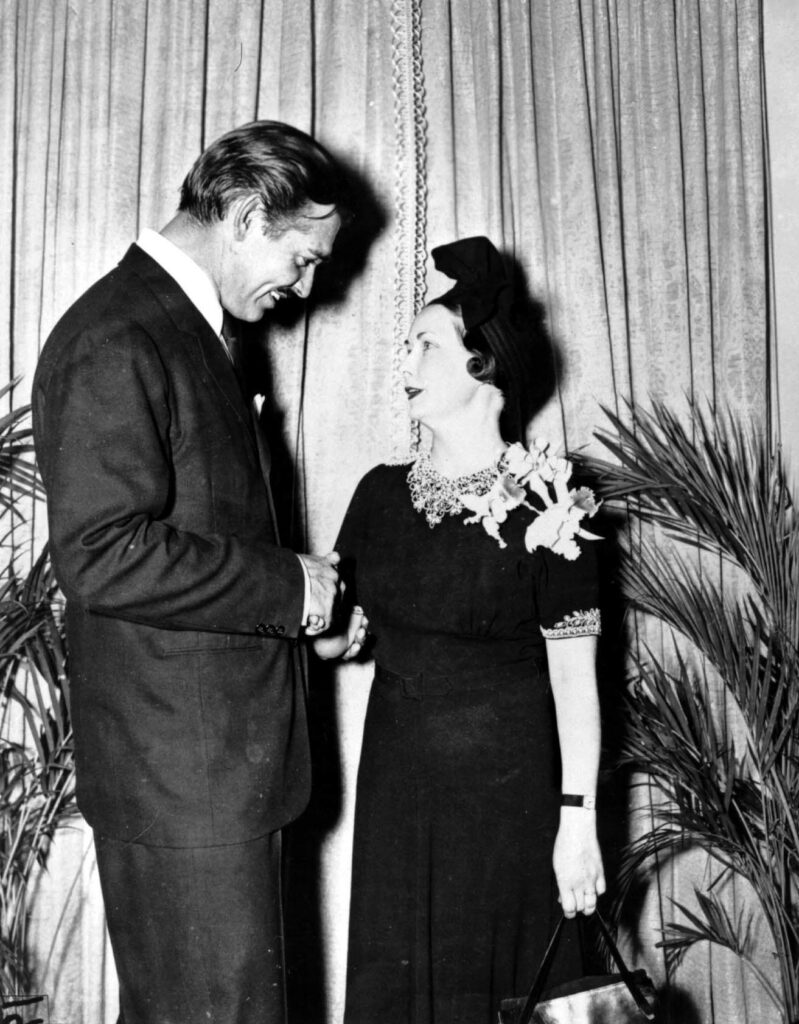
Courtesy of Atlanta Journal-Constitution.
Gone With the Wind was widely praised as a landmark achievement, and critics continue to regard it as important for its cinematography, art direction, and special effects, and for its ambitious portrayal of history. In a year that produced some of the best American films ever made, Gone With the Wind received thirteen Academy Award nominations in twelve categories (plus two nominations in special categories) and won eight awards, including Best Picture, Best Screenplay, Best Director, Best Actress (Vivien Leigh), Best Supporting Actress (Hattie McDaniel, a first for a Black actress), Best Art Direction, Best Film Editing, and Best Cinematography, as well as a special award to William Cameron Menzies for use of color.
In its first run the film played for slightly more than two years and was seen by more than 25 million viewers. Many more have seen it in subsequent releases and on home video. Frank S. Nugent asked in his New York Times review of the film, “Is it the greatest motion picture ever made? Probably not, although it is the greatest motion mural we have seen and the most ambitious filmmaking venture in Hollywood’s spectacular history.” A McCall’s reviewer wrote that the film, “fantastic in scope, extraordinary in detail, played better than any movie I’ve ever seen, and more colossal, stupendous, gigantic and terrific than any picture ever has been.” Gone With the Wind is fourth on the American Film Institute’s list of the “100 Greatest American Movies of All Time.” It is probable that more people have seen Gone With the Wind than any other film ever made.








